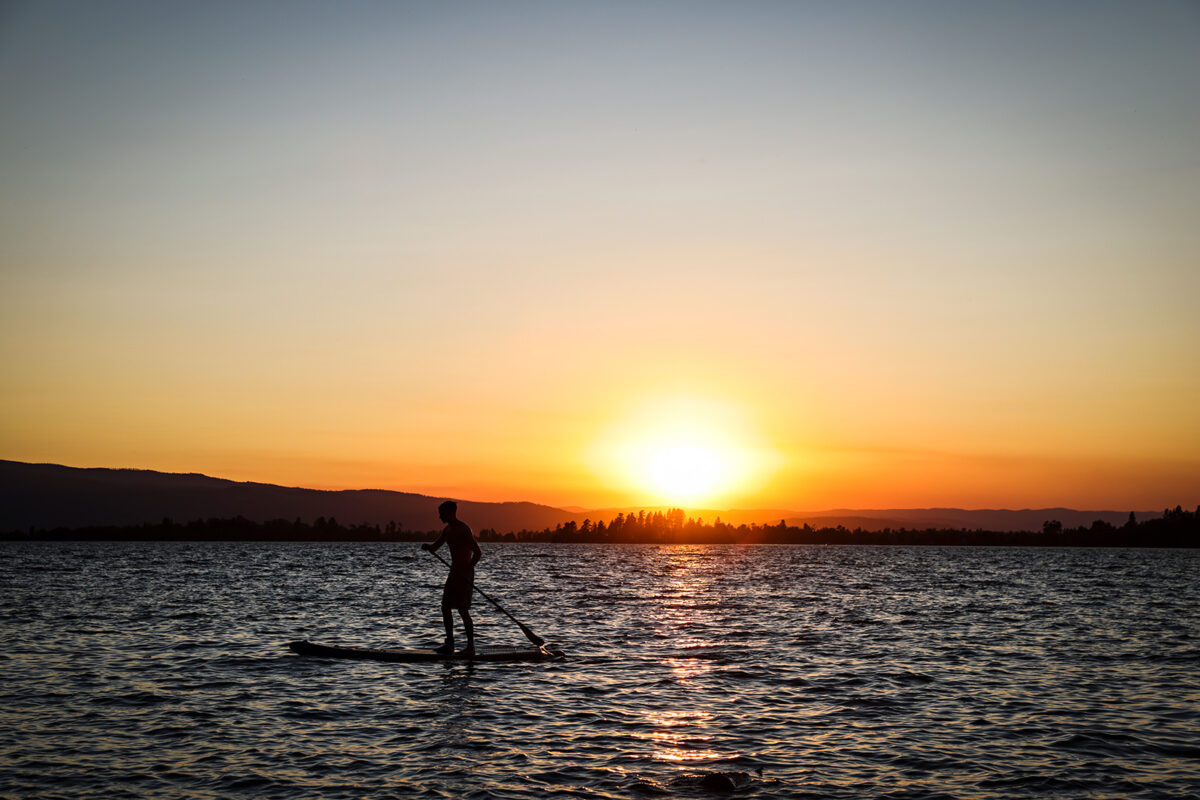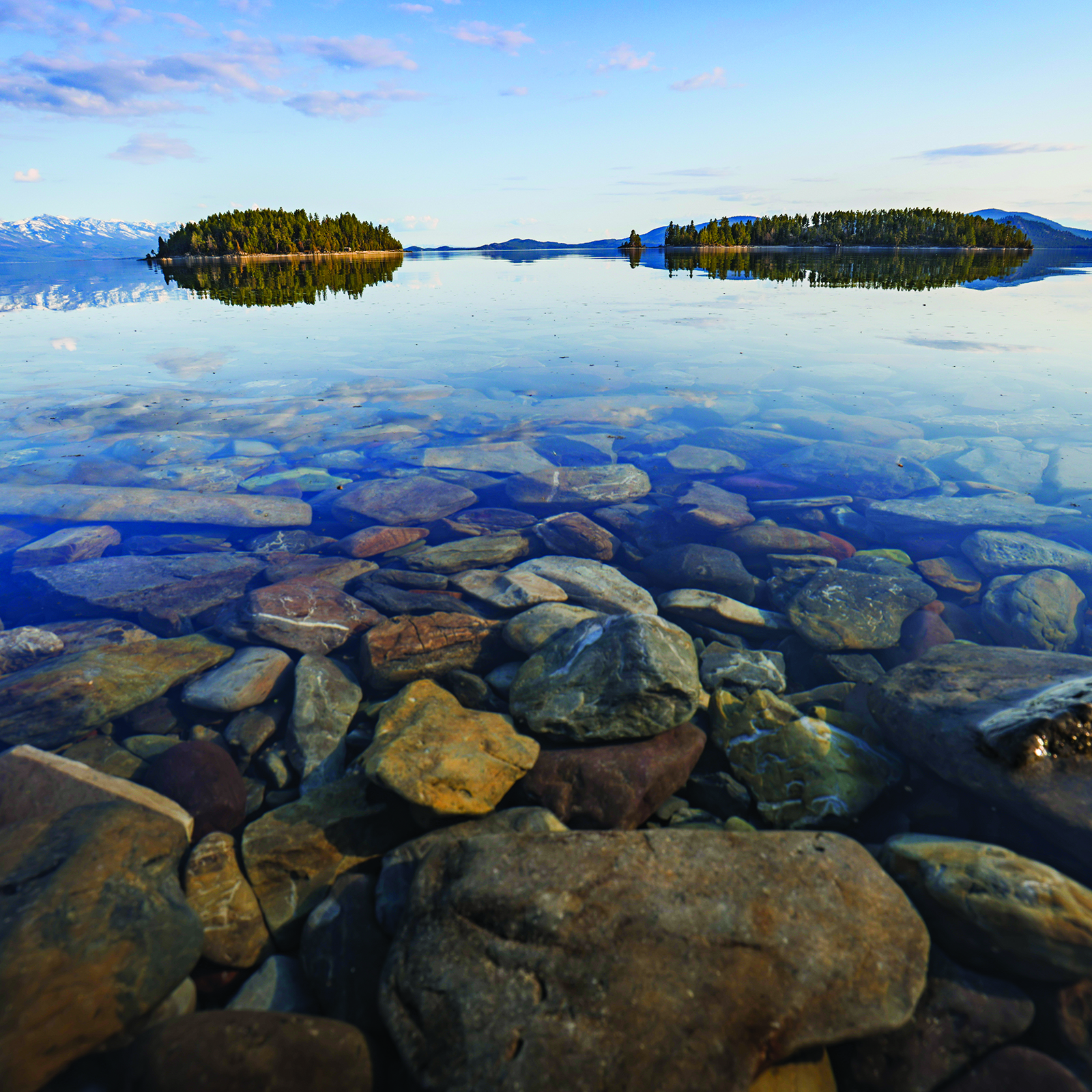Perched on paddleboards in the center of the mercifully tranquil blue mass, my expedition partner and I stopped for a moment to absorb our surroundings. I was grateful to not be attempting this alone. We were quite literally as far away as one could venture from solid ground in the landlocked state of Montana. In the center of Flathead Lake, the largest natural body of freshwater in the western United States outside of Alaska, the nearest spot of terra firma, Wild Horse Island, is about three-and-a-half miles to the west, with the shores on all other compass points ranging as far as four to 16 miles away.
The prodigious volume of water beneath our feet undulated subtly through our boards. How humbling to stand on the skin of a sleeping giant roused all too easily by the wind. But as the air deities would have it, only the gentlest of breezes greeted our backs from the southeast, nudging us from the Finely Point peninsula on the precise heading of our next destination: Cedar Island. An agreeable contrast to the 20-mile-per-hour gusts and three-foot waves that rocked us across Polson Bay the day before.
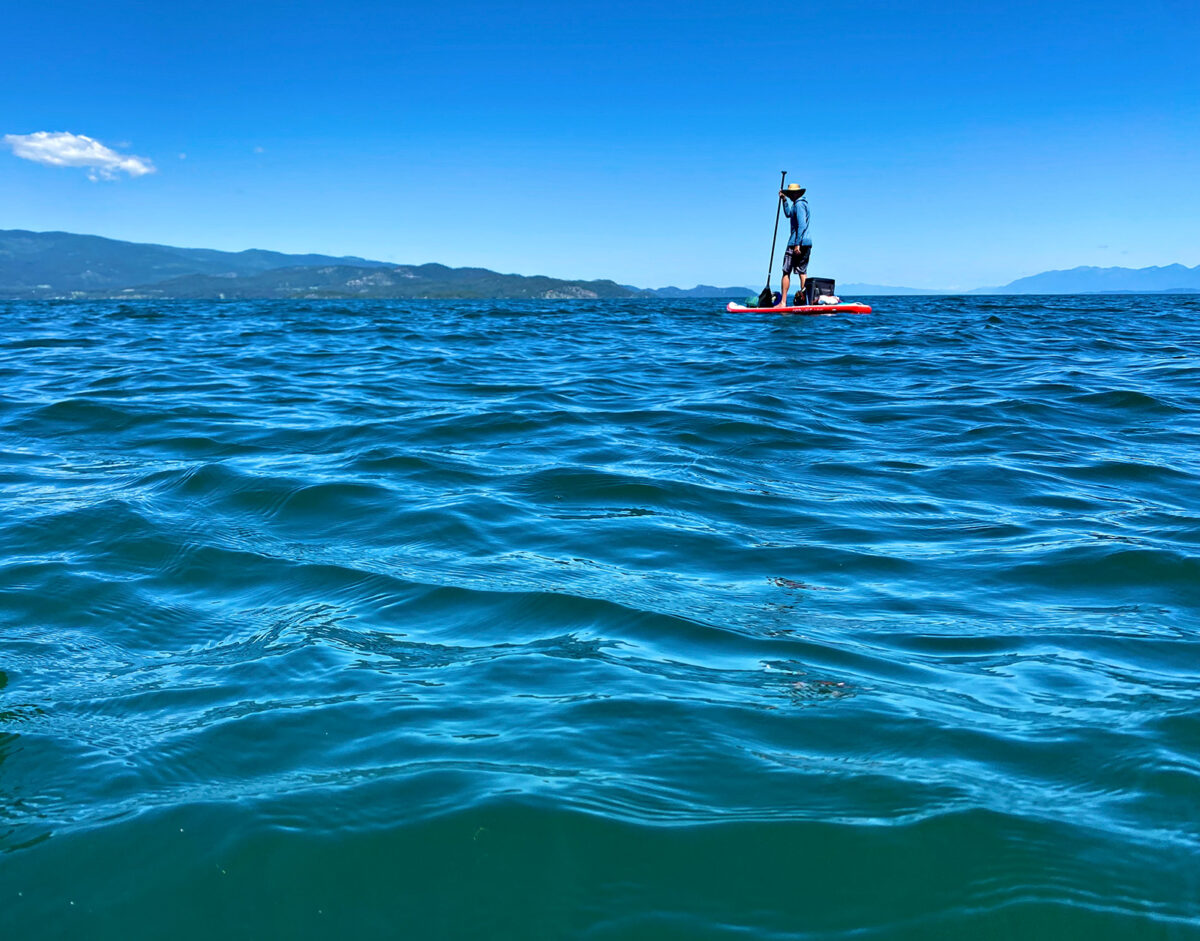
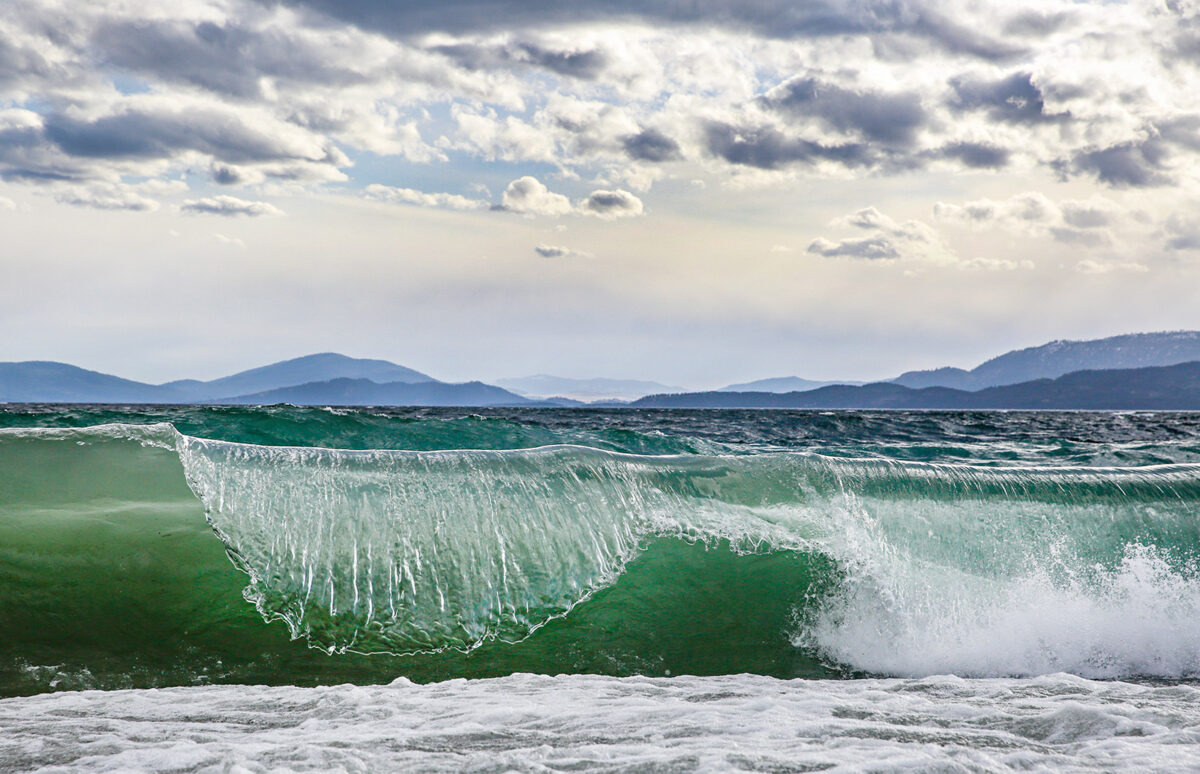
Paddleboarding is a meditative form of exploration and is my preferred way to experience the outdoors. Flathead Lake, by extension, has cemented itself in my psyche as my favorite place on Earth, a position bolstered further after the 31-mile midsummer trek of its entire length, from Polson to Somers.
As anyone who has explored its aqueous expanses knows, Flathead Lake’s grand scale bestows it with oceanic qualities. Sustained spring gales can curl its surface waters into six-to-eight-foot waves that thunder onto its stony shores with the fortissimo of their salty counterparts.
Fleets of sailboats punctuate its horizons on calmer summer days and gulls cry out overhead with the same gusto as their seaside brethren. The 79th largest freshwater lake in the world is also one of the world’s cleanest and clearest, thanks to its watershed sources of Glacier National Park and adjacent wilderness areas and national forests.
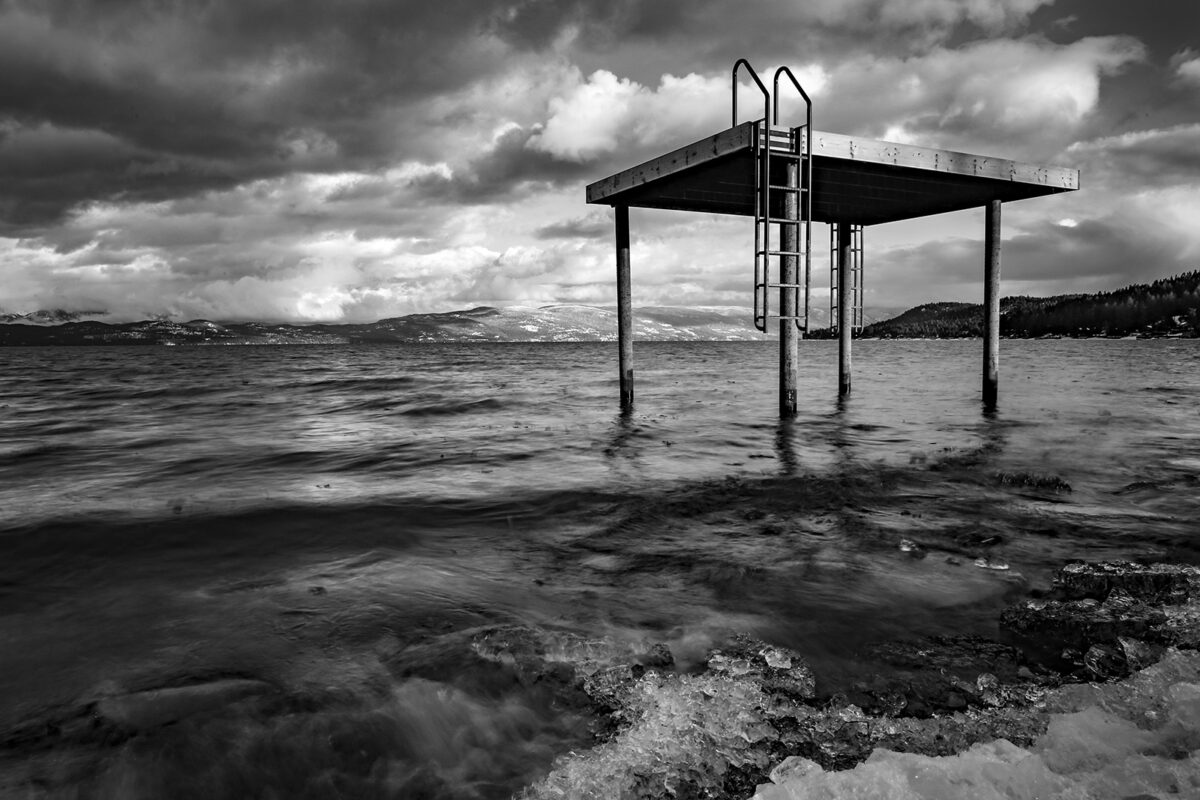
Flathead Lake’s unique beauty has no doubt played the leading role in its increasing popularity.
The spring of 2022 ushered in a half-mile of new public shoreline with the opening of Somers Beach State Park. While the entirety of the lake is a spectacle, the Sliter family’s transfer of the 106-acre plot on the north shore to Montana Fish, Wildlife and Parks is uncommonly auspicious. Replete with soft, shallow sandy expanses, driftwood-dotted Somers Beach is among the crème de la crème of Montana waterfronts.
Of the lake’s 187 miles of shoreline, only about 12% is public (excluding islands), making the lake’s seventh state park a welcome and congestion-easing addition.
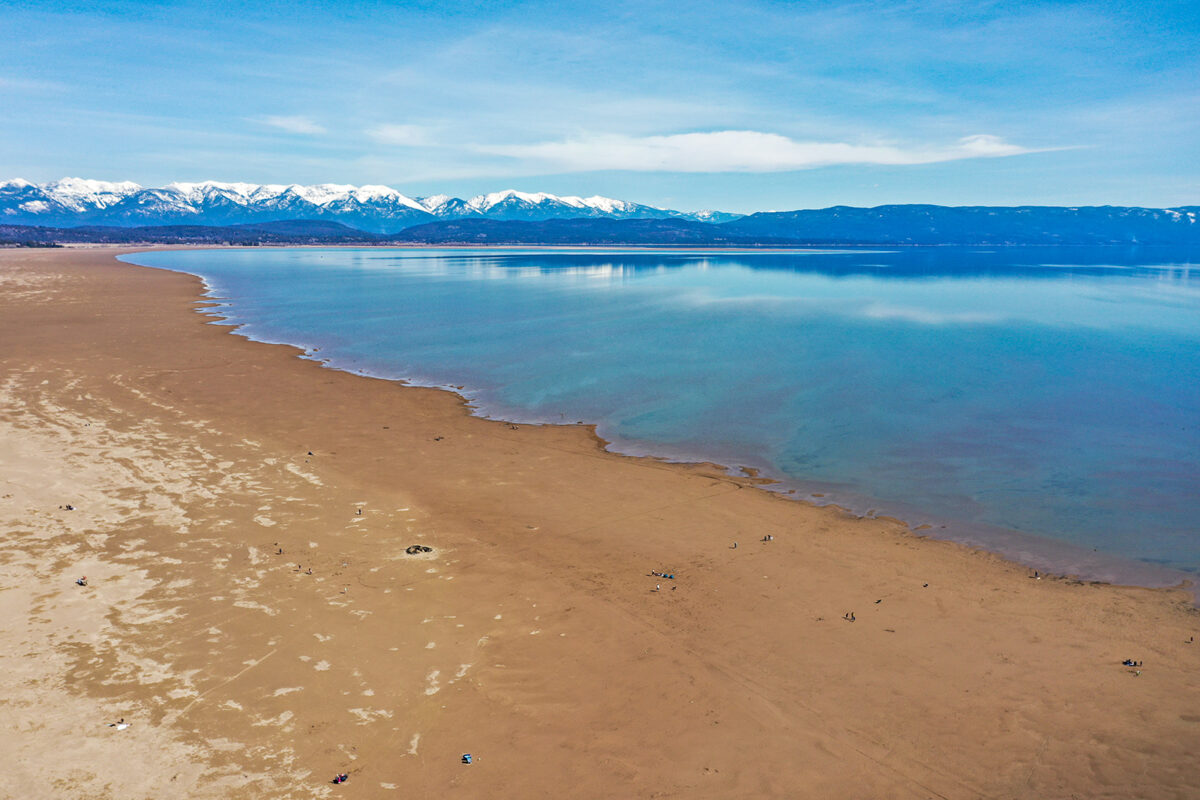

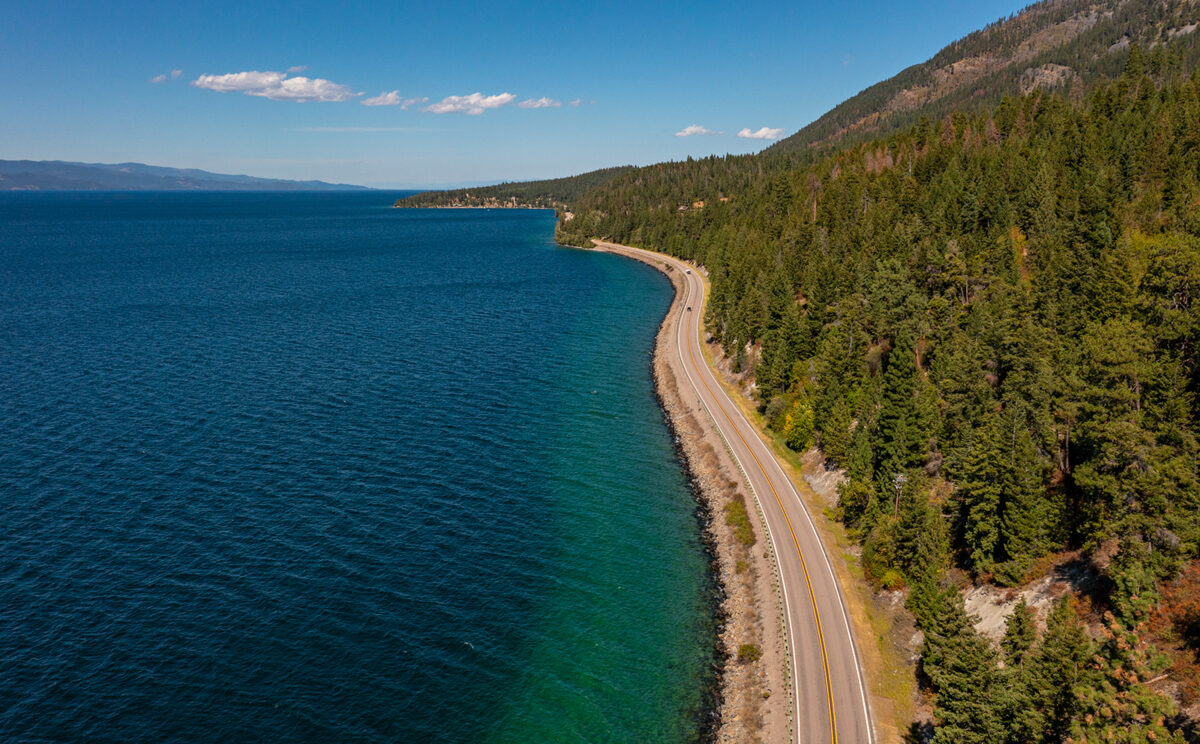
Visitation to state parks around Montana has increased 71.1% since 2010, to a total of 3.4 million visitors in 2021. The formerly six state park units of Flathead Lake tallied a combined total of almost 340,000 visitors in 2021, with the bloc of lake parks ranking the second most visited in Big Sky Country. Summer campsites on the lake in recent years are booked up weeks or even months in advance.
Crosswinds, waves and dodging hypothermia aside, mapping and planning around the lakeside crowds for layovers proved the most logistically challenging aspect of the trans-lake paddleboard expedition.
The number of people flocking to Montana is unlikely to abate, so the pertinent question is: how do we accommodate them while maintaining quality of life and the integrity of the outdoor experience? More well-managed public parks are a critical piece of that puzzle.
As with paddleboarding, it’s all about finding the right balance.
